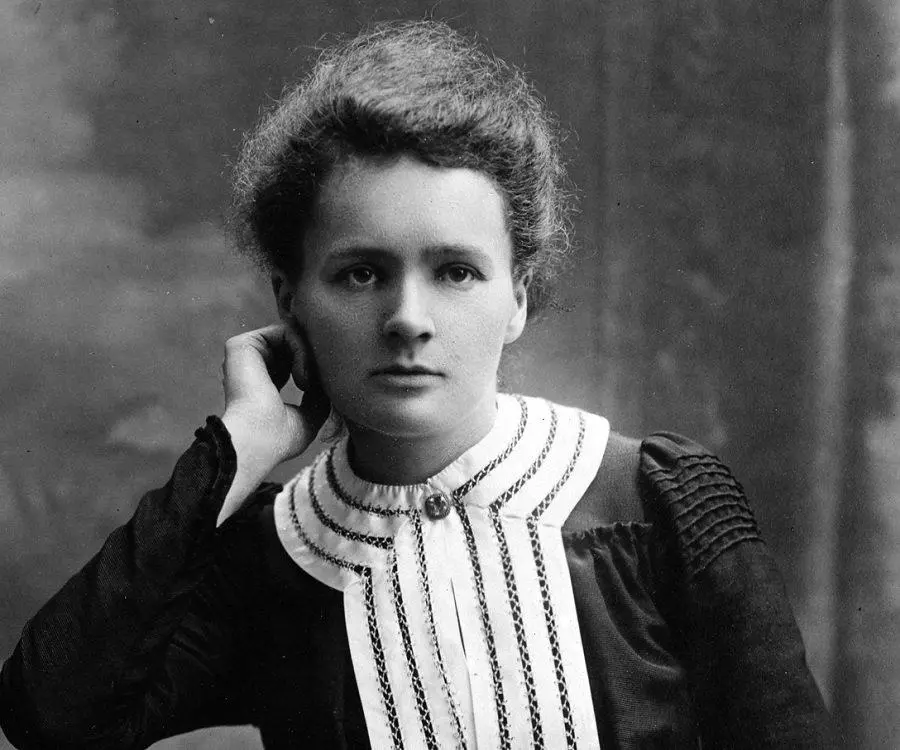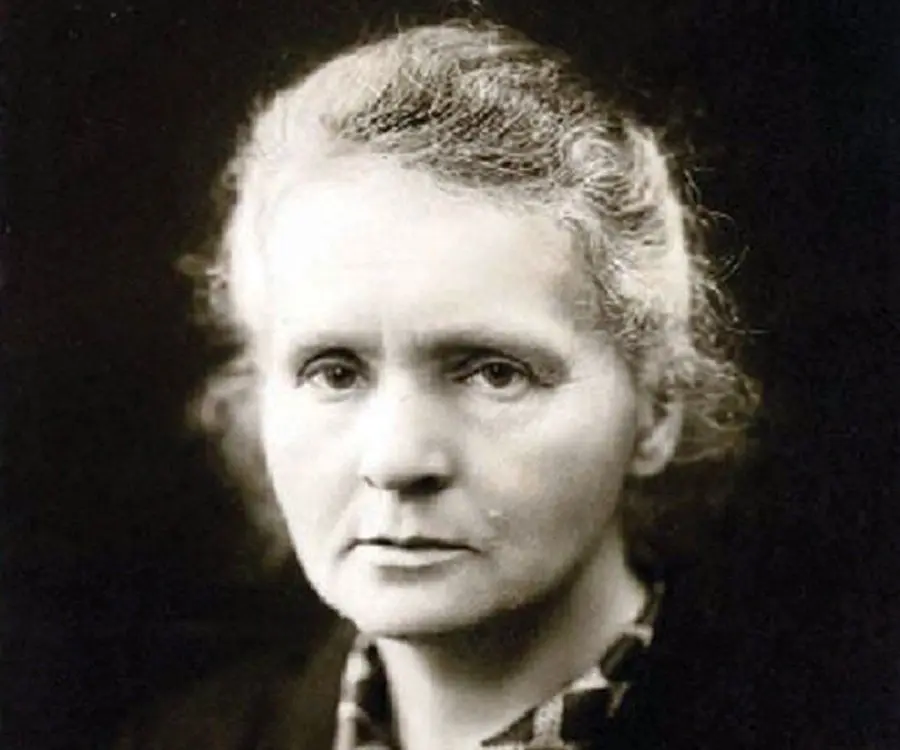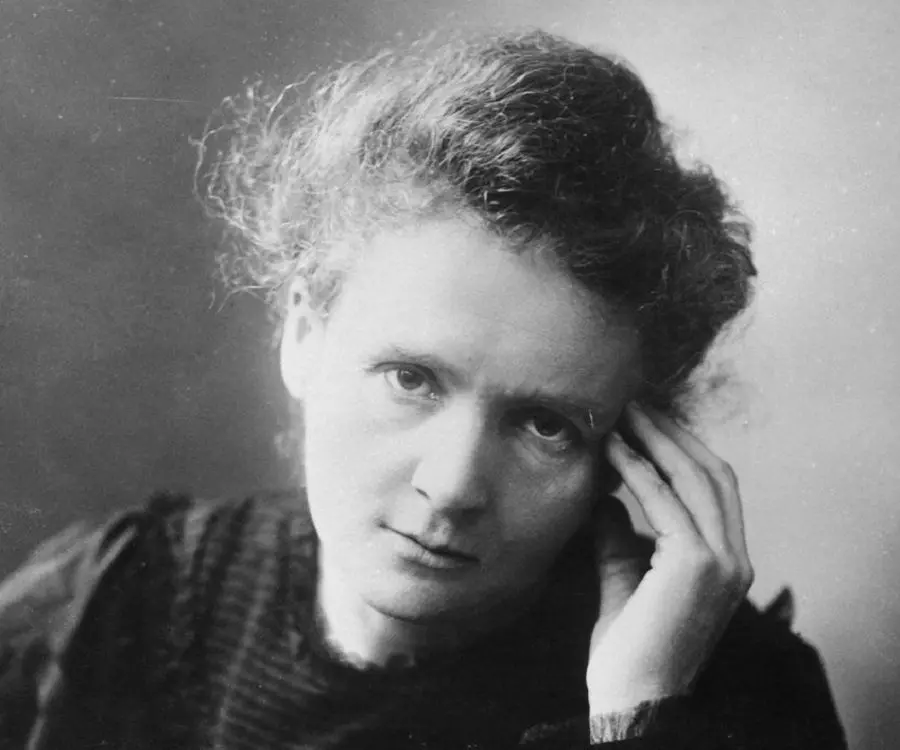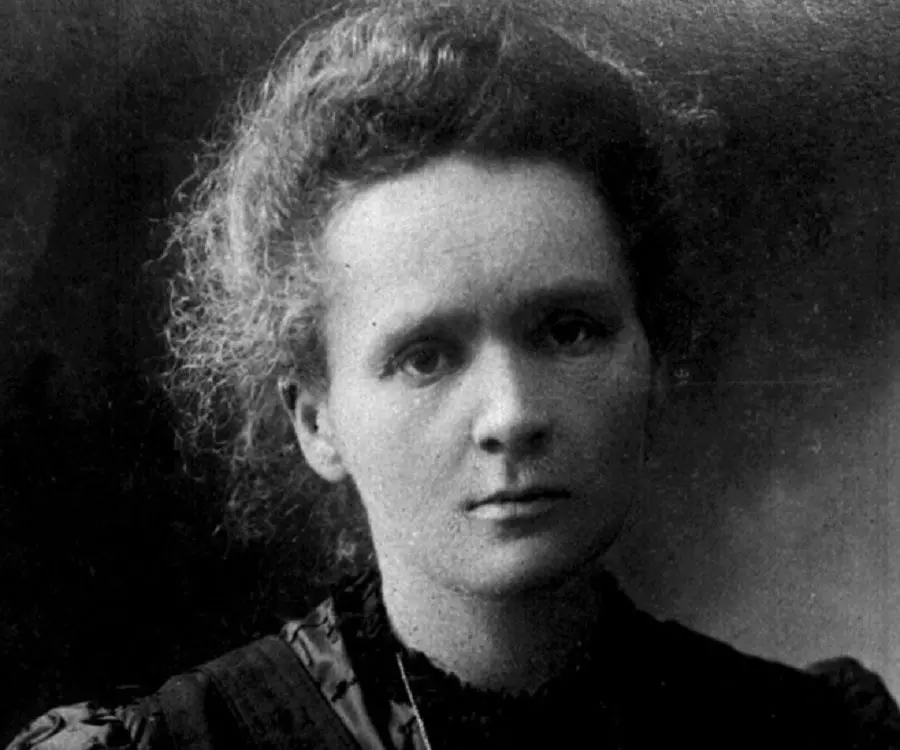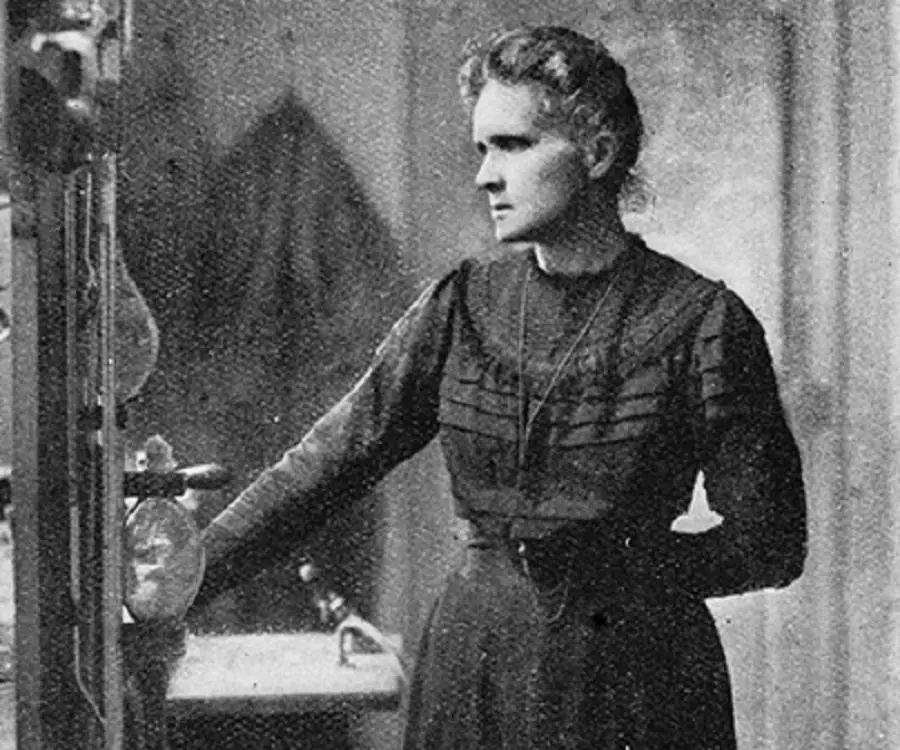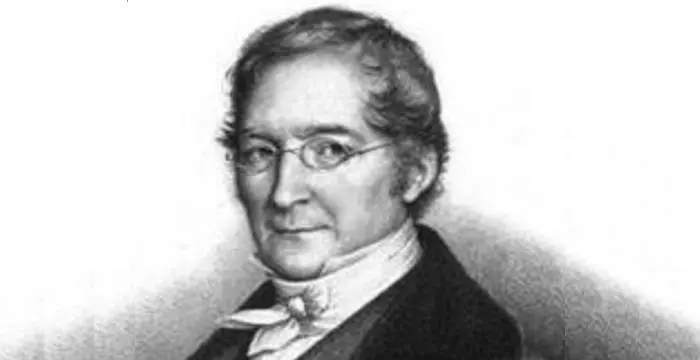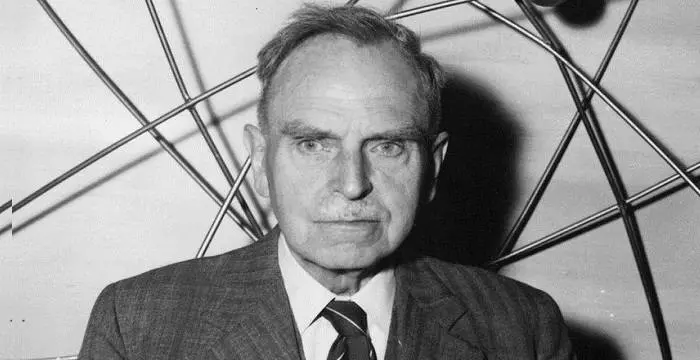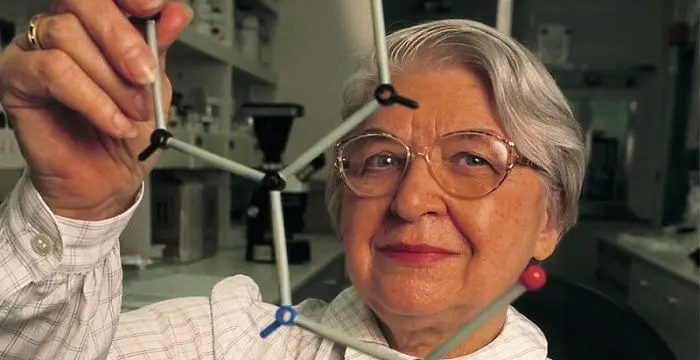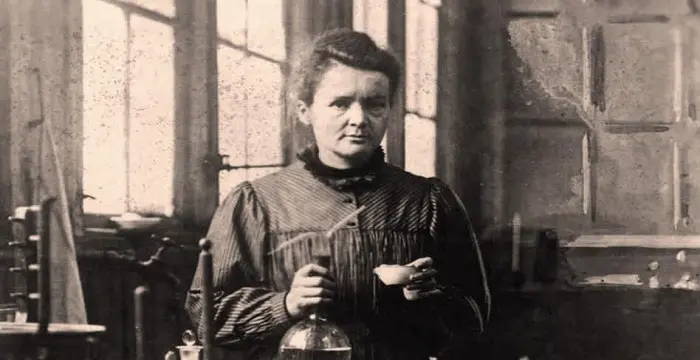
Marie Curie - First Woman to Win a Nobel Prize, Family and Facts
Marie Curie's Personal Details
Marie Curie was a Physicist and Chemist, who was world renowned for her work on radioactivity
| Information | Detail |
|---|---|
| Birthday | November 7, 1867 |
| Died on | July 4, 1934 |
| Nationality | Polish |
| Famous | Atheists, Atheists/Agnostics, Left Handed, Scientists, Physicists, Chemists, INTP, First Woman to Win a Nobel Prize |
| Spouses | Pierre Curie |
| Siblings | Bronislawa (1865), Helena (1866), Józef (1863), Zofia (1862) |
| Known as | Marie Sklodowska-Curie |
| Childrens | Irène Joliot-Curie |
| Universities |
|
| Discoveries / Inventions |
|
| Birth Place | Warsaw, Poland |
| Gender | Female |
| Father | Wladyslaw Sklodowski |
| Mother | Bronislawa Sklodowska |
| Sun Sign | Scorpio |
| Born in | Warsaw, Poland |
| Famous as | First woman to win a Nobel Prize |
| Died at Age | 66 |
Marie Curie's photo
Who is Marie Curie?
Marie Curie has a number of ‘firsts’ and ‘only’ to her credit – she was the first woman ever to win a Nobel Prize, the first female professor at the University of Paris, the first woman to be entombed on her own merits in the Pantheon in Paris, the only woman to win Nobel Prize in two fields and the only woman to win in multiple sciences. A celebrated physicist and chemist, Marie Curie gave her life to research and discovery, her large repertoire of work standing as a testimony of the same. She made significant breakthroughs in her life which have been inspirational for scientists till date. It was through her discoveries that the orthodox notion amongst scientists was broken as they were exposed to new line of thought on matter and energy. Curie is responsible for not just theorizing the concept of radioactivity but coining the term as well. Furthermore, it was through her relentless dedication and hard work that elements polonium and radium, that we know today, were discovered. She even worked on the technique for isolating radioactive isotopes in her lifetime. In addition to her work in the field of science, Curie contributed heavily during World War I as well, establishing the first ever military field radiological centres. To know in details about her life and profile, scroll further.
// Famous Physicists
Henry Cavendish
Henry Cavendish was a theoretical chemist and physicist, renowned for discovery of hydrogen and calculation of the mass of earth. To know more about his childhood, profile, timeline and career read on
Walter Kohn
Nobel Laureate Walter Kohn was an Austrian-born American theoretical chemist and physicist. Check out this biography to know about his childhood, life, achievements, works & timeline.
Nikola Tesla
Nikola Tesla was a Serbian-American inventor, best known for his development of alternating current electrical systems. This biography of Nikola Tesla provides detailed information about his childhood, life, achievements, works & timeline.
Childhood & Early Life
Maria Sklodowska (Marie Curie) was the youngest of the five children born to Bronislawa and Wladyslaw Sklodowski. Both her parents were employed as teachers.
Since a young age, she took to following the footsteps of her father and showed keen interest in mathematics and physics. After attaining her preliminary education from J. Sikorska, she enrolled herself in the gymnasium for girls. She graduated with a gold medal in 1883.
Unable to enrol in the men-only University of Warsaw, she then took up a teaching position with the Flying University. However, she did not let her dream to earn an official degree fade away and struck a deal with elder sister Bronislawa, according to which, she would support Bronislawa initially and later would be assisted by her.
She took up odd jobs, that of a tutor and governess, to earn extra money to assist her sister’s education. Meanwhile, in her spare time, she continued to self-educate herself, reading books and like. She even started her practical scientific training at the chemical laboratory.
In 1891, she moved to France and enrolled herself at the Sorbonne University. It was there that she came to be known as Marie. With meagre financial aid, she took to tutoring in the evening to earn money for survival.
In 1893, she was awarded a master’s degree in physics, while she attained master’s degree in mathematics the following year. She started her scientific career by investigating the different type of steel and their magnetic properties.
The need for a larger laboratory led to her being introduced to Pierre Curie, who was an instructor at the School of Physics and Chemistry. Curie helped her find a better space for working.
Though she made several attempts to move back to Poland and continue her research in her own country, she was denied a place because of her sex. As a result, she returned to Paris to pursue a PhD.
Career
In 1896, Henri Becquerel’s discovery of uranium salts emitting rays deeply inspired and interested her and led to taking the work a little further. She employed electrometer to find out that the rays remained constant, irrespective of the condition or form of uranium.
After conducting her research, she found out that the rays were emitted from the element’s atomic structure and were not the outcome of the interaction of molecules. It was due to this revolutionary finding that the field of atomic physics came into existence.
Since conducting researches did not bring much financial assistance to the family, she took up a teaching position at the École Normale Supérieure. Meanwhile, she continued with her research employing two uranium minerals, pitchblende and torbernite.
Intrigued by her work, Pierre dropped his own research on crystals and started working with Curie in 1898. They began to conduct a study to find out additional substances that emitted radiation.
In 1898, while working on the mineral pitchblende, they discovered a new element which was also radioactive. They named it ‘polonium’, after Poland. Later the same year, they found out yet another element that they named ‘radium’. It was during this time that they coined the term, ‘radioactivity’.
To eliminate any doubts about their discovery, the two undertook the ardent task of taking out polonium and radium in their pure form, from the mineral pitchblende. In 1902, they finally succeeded in separating out radium salt by differential crystallization.
Meanwhile, from 1898 until 1902, the two published about 32 scientific papers, which gave a detailed account of their work on radioactivity. It was in one of these papers that they reported that the tumor-forming cells were destroyed faster than healthy cells when exposed to radioactivity.
In 1903, she was awarded a doctorate degree from the University of Paris. Same year, the two were bestowed with a Nobel Prize in Physics which they accepted only in 1905.
In 1906, following the death of Pierre, Sorbonne University offered her his chair of physics and professorship which she accepted with an aim to set up a world-class laboratory.
In 1910, she successfully isolated radium and defined an international standard for radioactive emissions which eventually was named after her surname.
In 1911, she was bestowed with her second Nobel Prize, this time in Chemistry.
International recognition helped her set up Radium Institute with support of the French Government. The centre aimed at conducting research in the field of chemistry, physics, and medicine.
During World War I, she set up radiology centre to assist military doctors in treating ailing soldiers. She directed the installation of twenty mobile radiological vehicles and another 200 radiological units at field. It is estimated that over one million wounded soldiers were treated with her x-ray units
Post War, she penned a book, titled, ‘Radiology in War’, which gave a detailed account of her war time experiences.
For most of the later years, she travelled to different countries to raise funds for research on radium.
In 1922, she was appointed as a fellow of the French Academy of Medicine. Additionally, she also became a member of the International Commission for Intellectual Cooperation of the League of Nations
In 1930, she was appointed as the member of the International Atomic Weights Committee.
Major Works
She was responsible for coining the term radioactivity and theorizing the concept, in addition to discovering two elements polonium and radium and finding techniques for isolating radioactive isotopes.
Awards & Achievements
In 1903, Marie Curie and her husband Pierre Curie were jointly awarded the Nobel Prize in Physics in recognition of the extraordinary services they have rendered by their joint researches on the radiation phenomena discovered by Professor Henri Becquerel.
In 1911, she was awarded the Nobel Prize in Chemistry for her contribution to the discovery of the elements radium and polonium, isolation of radium and the study of the nature and compounds of this remarkable element.
Various buildings, institutions, universities, public places, roads and museums have been named after her. Additionally, there are several works of art, books, biographies, films and plays that give an account about her life and work.
Personal Life & Legacy
She was introduced to Pierre Curie by the Polish physicist, Professor Józef Wierusz-Kowalski. There was instant chemistry between the two as they shared a common passion for science.
Pierre proposed marriage to her but was declined. He again tried and the two tied the nuptials on July 26, 1895. Two years later, they were blessed with a baby girl Irene. In 1904, their second daughter Eve was born.
Marie breathed her last on July 4, 1934, at the Sancellemoz Sanatorium in Passy, in Haute-Savoie, suffering from aplastic anemia due to prolonged exposure to radiation.
She was interred next to Pierre Curie in Sceaux. About six decades later, their remains were transferred to the Pantheon, Paris
Trivia
She is the first woman to be awarded with the prestigious Nobel Prize and the only to win it in two field and multiple sciences. She is responsible for coining the term radioactivity.
// Famous Scientists
Juliane Koepcke
Juliane Koepcke is a German-Peruvian biologist, who was the lone survivor among the 92 passengers and crew of the ill-fated LANSA Flight 508 that crashed in the Peruvian rainforest on 24 December 1971. Know more about her life in this biography.
Henry Cavendish
Henry Cavendish was a theoretical chemist and physicist, renowned for discovery of hydrogen and calculation of the mass of earth. To know more about his childhood, profile, timeline and career read on
Konstantin Tsiolkovsky
Konstantin Tsiolkovsky was a Russian rocket scientist and a pioneer of astronautics. This biography provides detailed information about his childhood, family, personal life, career, achievements, etc.
Marie Curie's awards
| Year | Name | Award |
|---|---|---|
Other | ||
| 0 | 1903 - Nobel Prize in Physics | |
| 0 | 1911 - Nobel Prize in Chemistry | |
Marie Curie biography timelines
- // 7th Nov 1867Maria Sklodowska (Marie Curie) was the youngest of the five children born to Bronislawa and Wladyslaw Sklodowski. Both her parents were employed as teachers.
- // 1883Since a young age, she took to following the footsteps of her father and showed keen interest in mathematics and physics. After attaining her preliminary education from J. Sikorska, she enrolled herself in the gymnasium for girls. She graduated with a gold medal in 1883.
- // 1891In 1891, she moved to France and enrolled herself at the Sorbonne University. It was there that she came to be known as Marie. With meagre financial aid, she took to tutoring in the evening to earn money for survival.
- // 1893In 1893, she was awarded a master’s degree in physics, while she attained master’s degree in mathematics the following year. She started her scientific career by investigating the different type of steel and their magnetic properties.
- // 1895Pierre proposed marriage to her but was declined. He again tried and the two tied the nuptials on July 26, 1895. Two years later, they were blessed with a baby girl Irene. In 1904, their second daughter Eve was born.
- // 1896In 1896, Henri Becquerel’s discovery of uranium salts emitting rays deeply inspired and interested her and led to taking the work a little further. She employed electrometer to find out that the rays remained constant, irrespective of the condition or form of uranium.
- // 1898Intrigued by her work, Pierre dropped his own research on crystals and started working with Curie in 1898. They began to conduct a study to find out additional substances that emitted radiation.
- // 1898In 1898, while working on the mineral pitchblende, they discovered a new element which was also radioactive. They named it ‘polonium’, after Poland. Later the same year, they found out yet another element that they named ‘radium’. It was during this time that they coined the term, ‘radioactivity’.
- // 1898 To 1902Meanwhile, from 1898 until 1902, the two published about 32 scientific papers, which gave a detailed account of their work on radioactivity. It was in one of these papers that they reported that the tumor-forming cells were destroyed faster than healthy cells when exposed to radioactivity.
- // 1902To eliminate any doubts about their discovery, the two undertook the ardent task of taking out polonium and radium in their pure form, from the mineral pitchblende. In 1902, they finally succeeded in separating out radium salt by differential crystallization.
- // 1903In 1903, Marie Curie and her husband Pierre Curie were jointly awarded the Nobel Prize in Physics in recognition of the extraordinary services they have rendered by their joint researches on the radiation phenomena discovered by Professor Henri Becquerel.
- // 1906In 1906, following the death of Pierre, Sorbonne University offered her his chair of physics and professorship which she accepted with an aim to set up a world-class laboratory.
- // 1910In 1910, she successfully isolated radium and defined an international standard for radioactive emissions which eventually was named after her surname.
- // 1911In 1911, she was awarded the Nobel Prize in Chemistry for her contribution to the discovery of the elements radium and polonium, isolation of radium and the study of the nature and compounds of this remarkable element.
- // 1922In 1922, she was appointed as a fellow of the French Academy of Medicine. Additionally, she also became a member of the International Commission for Intellectual Cooperation of the League of Nations
- // 1930In 1930, she was appointed as the member of the International Atomic Weights Committee.
- // 4th Jul 1934Marie breathed her last on July 4, 1934, at the Sancellemoz Sanatorium in Passy, in Haute-Savoie, suffering from aplastic anemia due to prolonged exposure to radiation.
// Famous Chemists
Henry Cavendish
Henry Cavendish was a theoretical chemist and physicist, renowned for discovery of hydrogen and calculation of the mass of earth. To know more about his childhood, profile, timeline and career read on
Walter Kohn
Nobel Laureate Walter Kohn was an Austrian-born American theoretical chemist and physicist. Check out this biography to know about his childhood, life, achievements, works & timeline.
Jabir Ibn Hayyan
Jabir Ibn Hayyan was a medieval era polymath. Check out this biography to know about his life, works and achievements.
Amedeo Avogadro
Amedeo Avogadro was an Italian scientist who formulated what is now known as Avogadro's law. This biography of Amedeo Avogadro provides detailed information about his childhood, life, achievements, works & timeline.
Otto Hahn
Otto Hahn was a Nobel Prize winning German scientist who discovered the phenomenon of nuclear fission and the element protactinium. To know more about his childhood, career, profile and timeline read on
Stephanie Kwolek
Stephanie Kwolek was an American chemist whose research work led to the development of the synthetic fiber, Kevlar. This biography of Stephanie Louise Kwolek provides detailed information about her childhood, life, achievements, works & timeline.
Marie Curie's FAQ
What is Marie Curie birthday?
Marie Curie was born at 1867-11-07
When was Marie Curie died?
Marie Curie was died at 1934-07-04
Where was Marie Curie died?
Marie Curie was died in Sancellemoz
Which age was Marie Curie died?
Marie Curie was died at age 66
Where is Marie Curie's birth place?
Marie Curie was born in Warsaw, Poland
What is Marie Curie nationalities?
Marie Curie's nationalities is Polish
Who is Marie Curie spouses?
Marie Curie's spouses is Pierre Curie
Who is Marie Curie siblings?
Marie Curie's siblings is Bronislawa (1865), Helena (1866), Józef (1863), Zofia (1862)
Who is Marie Curie childrens?
Marie Curie's childrens is Irène Joliot-Curie
What was Marie Curie universities?
Marie Curie studied at University of Paris (1903), University of Paris (1894), University of Paris (1891 – 1893)
What is Marie Curie's inventions/discoveries?
Polonium, Radium was invented (or discovered) by Marie Curie
Who is Marie Curie's father?
Marie Curie's father is Wladyslaw Sklodowski
Who is Marie Curie's mother?
Marie Curie's mother is Bronislawa Sklodowska
What is Marie Curie's sun sign?
Marie Curie is Scorpio
How famous is Marie Curie?
Marie Curie is famouse as First woman to win a Nobel Prize
